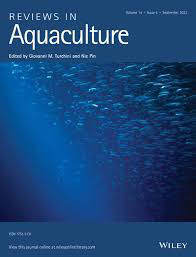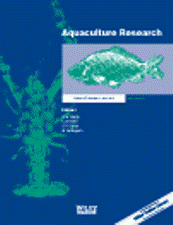Dietary combination of vitamin E, C and K affects growth antioxidant activity, and the incidence of systemic granulomatosis in meagre (Argyrosomus regius)

Abstract
Systemic granulomatosis is a growing disease with a high morbidity, which affects to the majority of farmed meagre (Argyrosomus regius). The impossibility of isolating any infectious agents has hypothesized a nutritional origin of the disease.
In order to try to elucidate the nutritional origin of granulomas, juvenile meagre were fed for 15 weeks with six diets containing different levels of vitamin E and C and with or without addition of vitamin K: Diet 0 (basal premix, no K, 150 mg kg−1 E, 20 mg kg−1C), K (added 23 mg kg−1 K), EC (300 mg kg−1 E, 70 mg kg−1C), KEC (23 mg kg−1 K, 300 mg kg−1 E, 70 mg kg−1C), EECC (450 mg kg−1 E, 230 mg kg−1C) and KEECC (23 mg kg−1 K, 450 mg kg−1 E, 230 mg kg−1C).
The diet EC significantly increased meagre growth in terms of final weight and length. Fish fed the highest levels of vitamin E and C presented lower percentage of granulomas in liver and heart than fish fed diet 0. The scored severity of granulomatosis in liver and kidney (main affected organs) tended to be lower with dietary increase of vitamin E, C and addition of vitamin K (from 1.83 diet 0 to 1.3 diet KEECC and from 0.91 diet 0 to 0.39 diet KEECC). In liver, the diet KEECC significantly increased catalase expression compared with diet 0. In kidney tnfα expression was significantly up-regulated in fish fed diet EECC and KEECC. In heart, low vitamin E and C levels (300 and 70 mg kg−1, respectively) significantly increased superoxide dismutase and glutathione peroxidase expression and high addition increased the expression of tnfα and cox-2 (0 or 23 mg kg−1 K, 450 mg kg−1 E and 230 mg kg−1C, diet EECC and KEECC).
The results show that combination of high dietary content of vitamin K and antioxidant vitamins E and C (23, 450 and 230 mg kg−1, respectively) influenced in the incidence of the granulomatosis, which suggests that this pathology could be mediated by nutritional factors.

